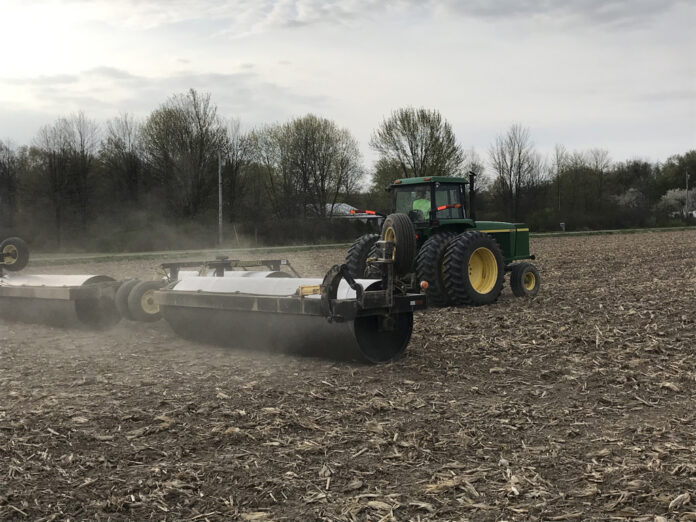
Hello, northeast Ohio! Despite the cold and snowy weather, we are quickly approaching planting season. Success of crop-stand establishment is dependent upon many factors such as soil temperature, moisture, seeding depth and more.
While we cannot control the weather, we can control or influence how and where a seed is placed at planting. Modern planters can do a fantastic job of precisely placing seeds at various depths and spacing, but overly dry or wet soils pose challenges with seed to soil contact.
Many farmers throughout the Midwest have been seeking ways to improve seed-to-soil contact for their crops. Increasing the surface area of the seed that is in contact with the soil promotes water uptake and accelerates germination.
Land rollers use
For corn and soybeans, a popular planter upgrade is updated row closing wheels that efficiently encapsulate the seed in soil. For alfalfa, wheat and other small-seeded crops typically planted with a drill or seeder, you may see the use of additional tools after planting to press seeds into the soil. Cultipackers, or cultimulchers, are frequently used both to prepare a seedbed and to firmly press shallow-planted seeds into the soil after planting.
Seeding depths for some grass species can be as shallow as 1/4 of an inch. With seeds so close to the soil surface, it can be difficult to firm up the seed bed. With this challenge in mind, a few creative Canadian farmers tried rolling their fields with pieces of oil pipeline to address. Based on their seeming success, several equipment manufacturers started designing and selling their own land rollers to mimic this technique.
We are probably all familiar with the small lawn rollers used each spring to flatten lawns; ag land rollers are very similar, but much larger. Several models of land rollers approach 100 feet in width and weigh over 20 tons. Land rollers create very smooth field surfaces by pushing rocks into the soil and smoothing ridges and at the same time firm up the seedbed by packing the soil. Smooth fields are easier to harvest and can reduce equipment damage because there are fewer rocks above the surface.
Trumbull County trial. With these benefits, land rollers are increasingly being used in soybean fields to improve harvest efficiency. Using on-farm research with a collaborating farmer here in Trumbull County, Ohio State University Extension evaluated the use of a land roller on soybeans. The strip trials included non-rolled controls, rolling immediately after planting and rolling at the first trifoliate stage.
It was hypothesized that with improved seed-to-soil contact that stand counts — and ultimately yield — would improve, but they did not. This trial was replicated for three years, and at the conclusion no significant difference was seen in yield or stand counts.
Why/why not
Without a yield increase, why would a farmer choose to adopt this practice? In simple terms, it reduces downtime and stress at harvest. By pushing down crop residue and field debris, combine headers can be run closer to the ground without the risk of hitting rocks.
In one trial, the combine had to stop on average every 1.125 acres to clear debris from the header in the non-rolled strips compared to zero stoppages in the rolled strips. While this field may have more rocks than yours, it demonstrates the value in rolling fields, even if it’s not yield. While we have seen some benefits to land rolling, there are also some drawbacks, especially in heavily tilled soils. Land rollers can create a very firm, smooth soil surface, and during rainfall, the water can rapidly move across the soil surface taking soil with it.
In addition to erosion, crusting can also be an issue. Although this has not been evaluated locally, several studies have shown an increase in weed density, so if you’re struggling with weed control, rolling may not be for you.
Like most tools on the farm, there is a time and a place. If you rarely struggle with rocks, you may find little use for a land roller, but if you’re stopping every five minutes to remove rocks from the header, you may want to consider this as a useful option. Or maybe you’re looking for that one-pass lawn roller for your bumpy yard.
Evaluate the pros and cons, and I’d be happy to chat with your more about it if you have questions.












